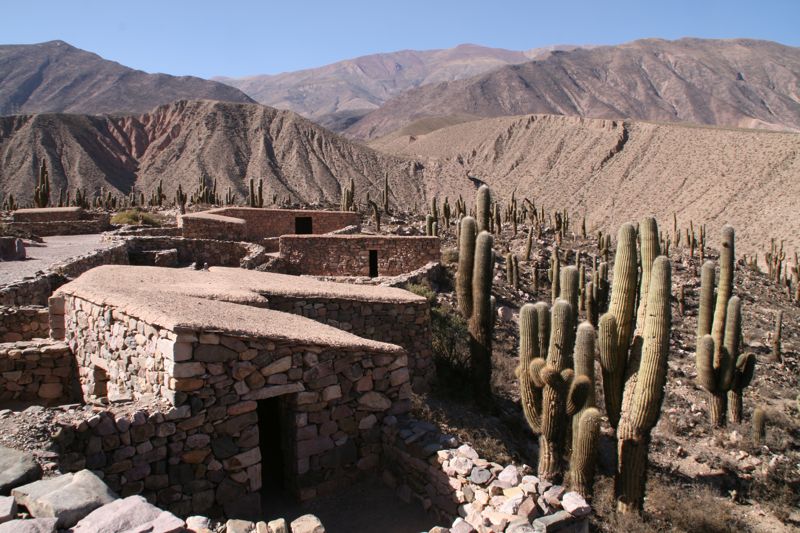When Argentina is mentioned most people will not have images of ancient civilizations popping into their minds. In Latin America the Mayas and the Incas grab the headlines and with good reason, the ruins they left behind at Chichen Itza and Machu Picchu (plus many others) are very impressive sites.
But there have been layers upon layers of civilizations rising and falling before these famous ancient peoples conquered various parts of Central and South America, and Argentina is no exception. The partially reconstructed Pucara de Tilcara ruins in Northern Argentina are an example of the Incas taking control of sites built by previous cultures, in this case the Omaguaca tribe.
The UNESCO listed Humahuaca Canyon, where Tilcara is found, is located 2 hours drive north of Salta and stretches up towards the border with Bolivia. Evidence has been found of settlements in the area dating back over 10,000 years but the Omaguaca built the Pucara de Tilcara during the 12th century. At its peak the site would have been home to around 2000 people and covered 15 acres.
The Omaguaca were focused on agriculture and animal rearing but the site would also have had military and ceremonial significance. Wandering the site you will see dwellings and ceremonial areas plus corals for animals. When the Incas took over the site they fortified the area even more to control the flow of precious minerals being extracted from the area.
When you visit the Pucara de Tilcara ruins you will see that much of the site has been left un-reconstructed and you can see how it was originally found, some dwellings have been restored to their original designs along with some ceremonial features, Inca doorways etc. The spectacular pyramid is not a reconstruction of an original feature but a monument to the historians that have worked on the project. While it doesn’t match the history of the site it does make for a few nice photos in this wonderful landscape. the views up and down the valley are beautiful as you can see in our video.

